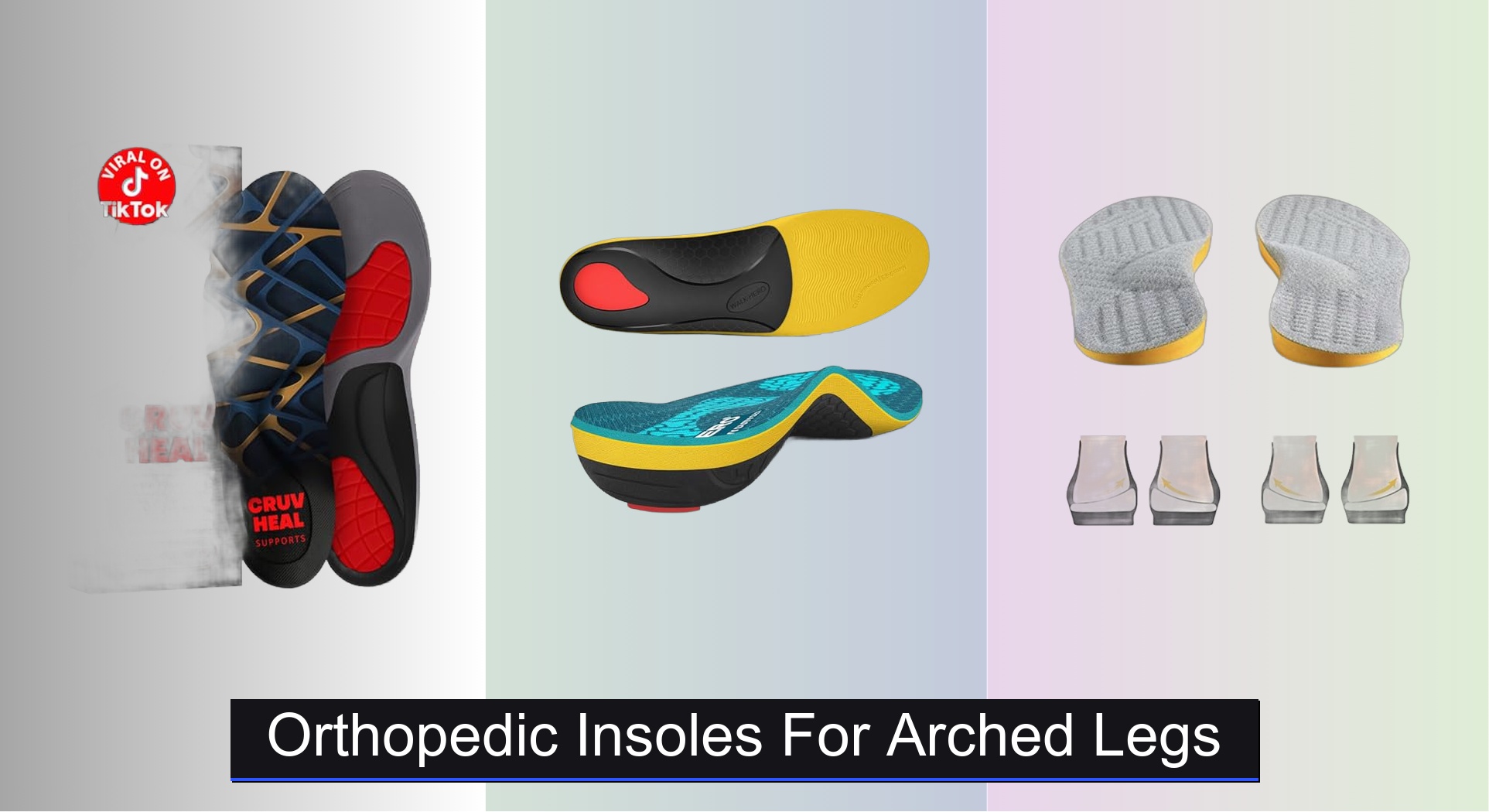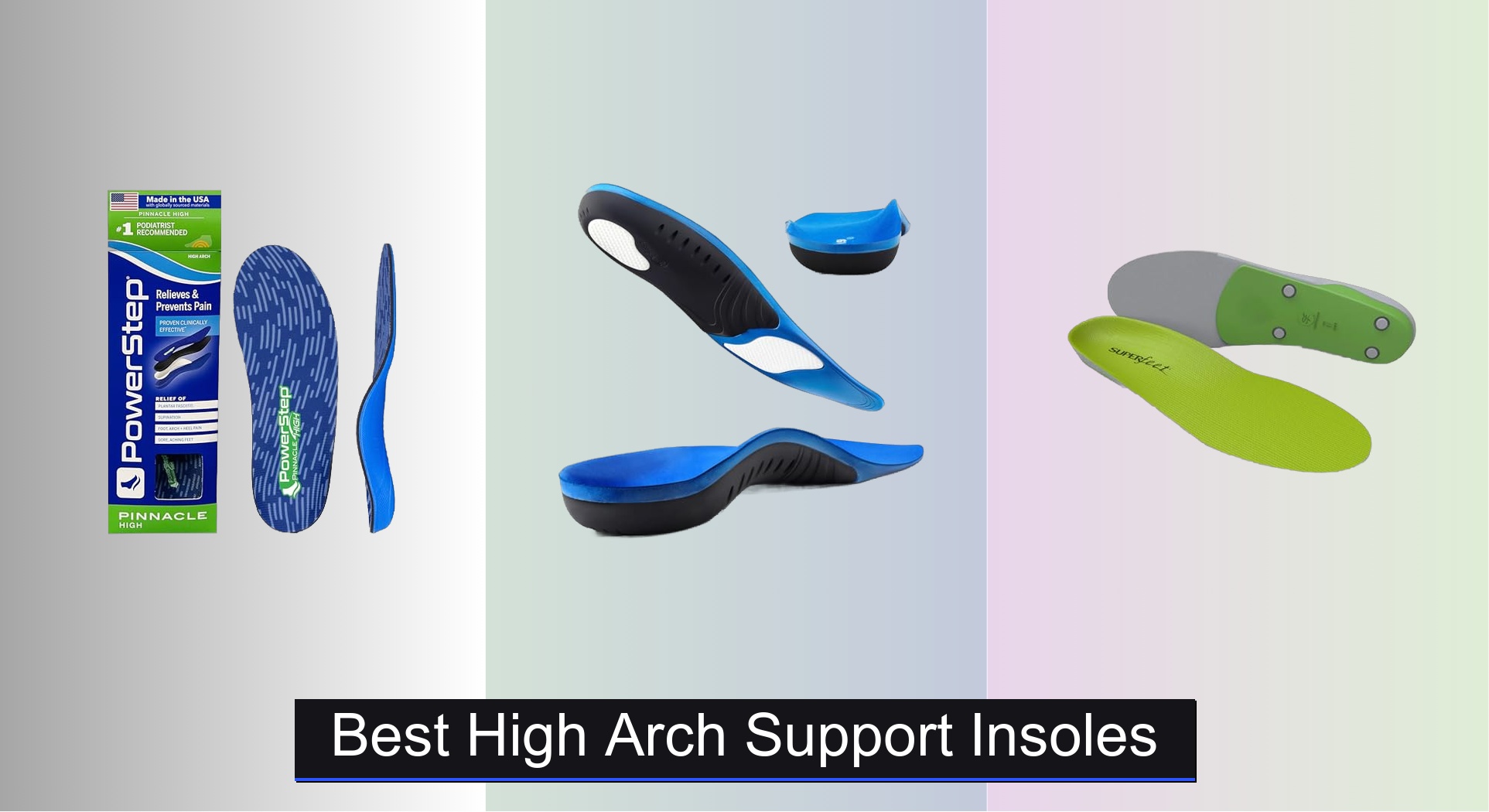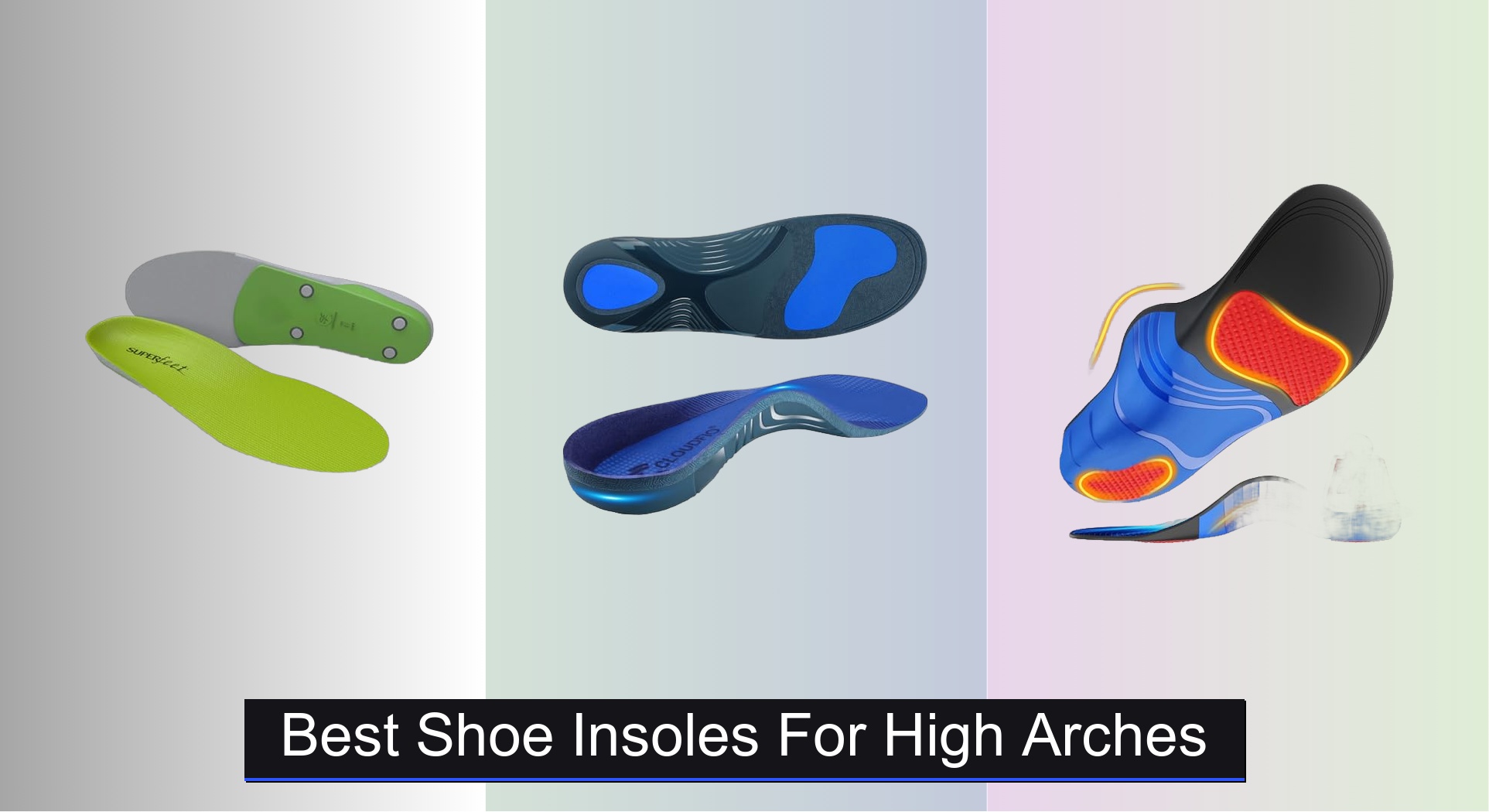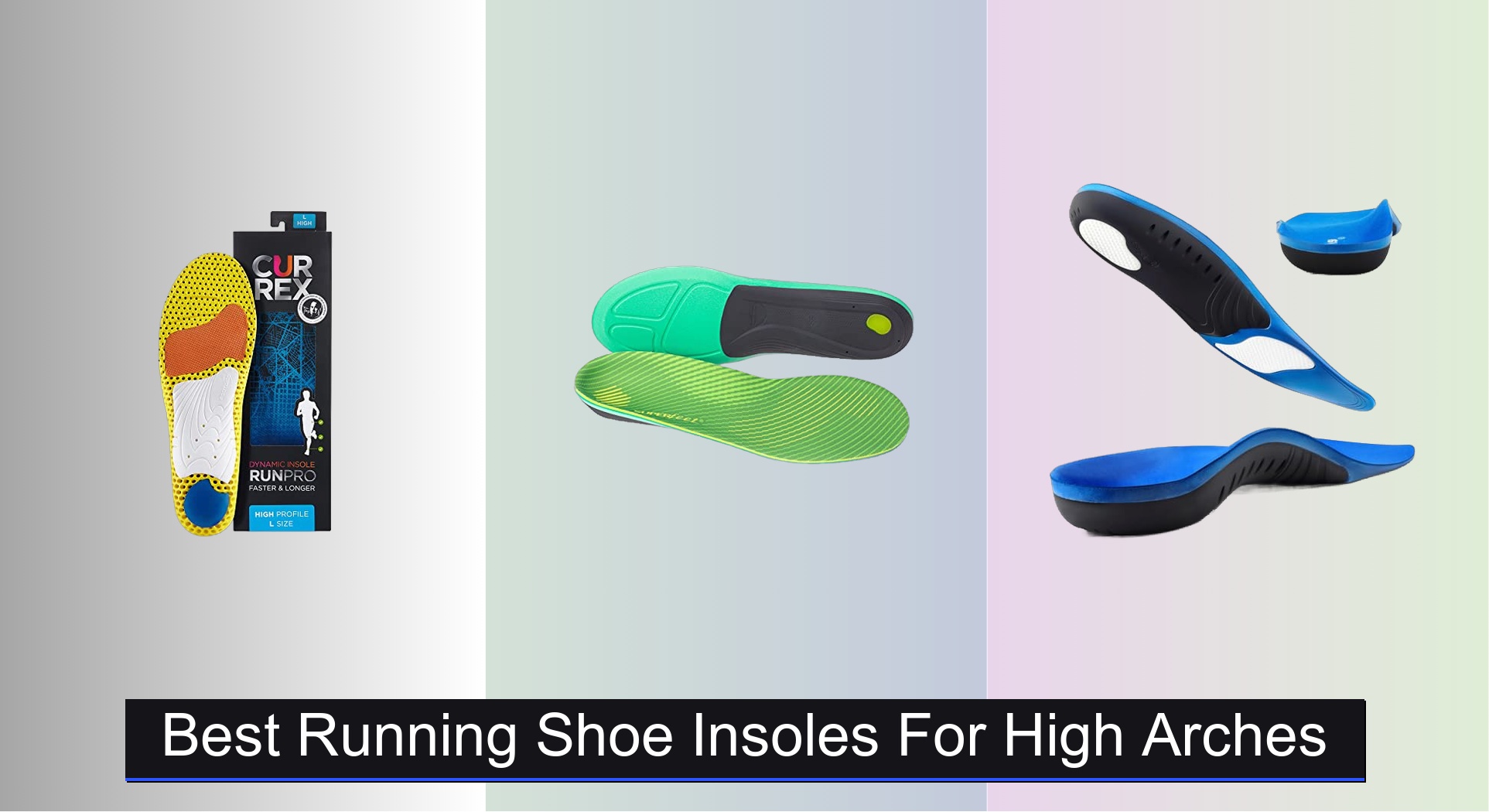High arches can lead to poor shock absorption, instability, and pain in the feet, ankles, and lower limbs due to excessive supination—especially during walking or standing. Many people struggle to find footwear that offers enough support, often experiencing discomfort from ill-fitting or overly soft insoles that fail to correct alignment. The right orthotic insole for high arches provides targeted arch support, reduces pressure points, and improves overall foot function.
We analyzed over 50 models, focusing on biomechanical effectiveness, material quality, and real-user feedback from individuals with high arches. Our top picks balance firm arch support, durable cushioning, and proper fit across various shoe types. Key factors include support level, weight capacity, and trim-to-fit flexibility. Keep reading to discover the best orthotic insoles for high arches that deliver lasting comfort and proven performance.
Best Options at a Glance

NEUPU Heavy Duty High Arch Insoles
Best for High Weight Support
- 240″ lbs
- 1.37″
- PU/TPU/Gel
- Trim-to-fit
- Boots/Sneakers/Work
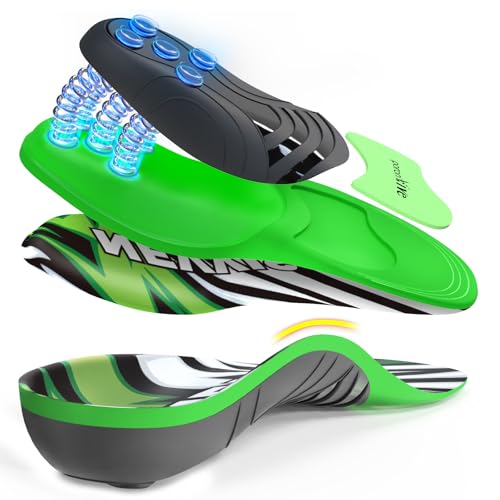
NEVVIS Dynamic Spring Plantar Fasciitis Insoles
Best for Energy Return
- 5-Spring Propulsion
- Orthopedic-Grade TPU
- Triple-Layer
- 250 lb
- Trim-to-Fit
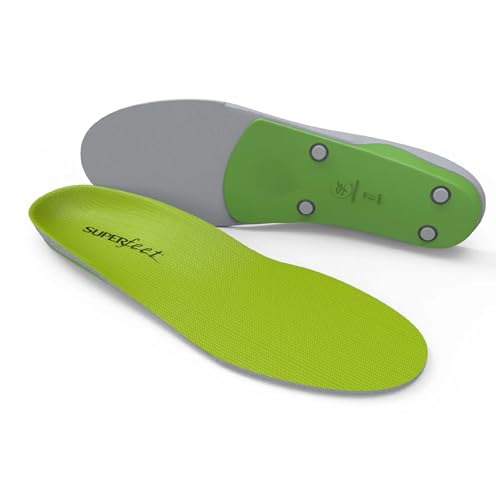
Superfeet All-Purpose Support Insoles
Best for Rigid Support
- High Arch
- Men 7.5-9 / Women 8.5-10
- Deep
- Moisturewick Top Cover
- Trim-To-Fit

PowerStep Pinnacle High Arch Orthotics
Best Overall
- High Arch
- Firm & Flexible
- Deep Heel Cradle
- Dual-Layer
- Made in The USA

OUOKK 3/4 Length Arch Support Inserts
Best for Tight Shoes
- Med Arch
- 3/4 Length
- 230+ lbs
- Plantar Fasciitis
- Unisex/Men / Women
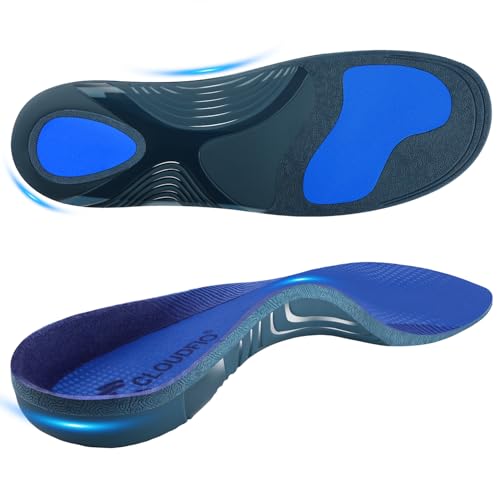
Cloudflo Plantar Fasciitis Insoles
Best for All-Day Standing
- High
- Plantar Fasciitis
- Enhanced
- Ortholite
- 220+ lbs

WalkHero Heavy Duty Pain Relief Insoles
Best Budget Friendly
- 220+ lbs
- High Arch
- EVA, OrthoLite, PU
- Plantar Fasciitis, Flat Feet
- M 8-8.5, W 10-10.5

PCSsole 3/4 Orthotics High Arch Inserts
Best Trim-to-Fit Design
- High Arch
- Firm EVA
- 3/4
- Plantar Fasciitis
- XL: Men 9-11
Orthotic Insole For High Arch Review
How to Choose the Right Orthotic Insoles for High Arches
Choosing the right orthotic insoles for high arches can significantly improve foot comfort, alleviate pain, and even positively impact your overall posture. With numerous options available, understanding key features is crucial. Here’s a breakdown to guide your selection:
Arch Support: The Foundation of Comfort
The level and type of arch support are paramount. High arches require substantial support to prevent over-supination (rolling outward) and absorb shock effectively. Insoles specifically designed for high arches will have a more pronounced arch lift compared to neutral or low-arch options. A well-supported arch distributes weight evenly, reducing pressure on the heel and ball of the foot. Insufficient support can lead to pain in the feet, ankles, knees, and even the lower back. Look for insoles that clearly state they are for “high arches” or offer a firm, defined arch.
Cushioning and Shock Absorption
While arch support is critical, cushioning plays a vital role in comfort and impact reduction. Different materials offer varying levels of cushioning. EVA foam is a common, lightweight option providing good shock absorption. More premium insoles incorporate materials like PORON or gel pads for enhanced cushioning, particularly in the heel and forefoot. Consider your activity level: those who stand or walk for extended periods will benefit from thicker, more substantial cushioning. If you’re an athlete, you might prioritize a balance of cushioning and responsiveness.
Material and Durability
The materials used in an insole impact its longevity and performance. Rigid materials like TPU (thermoplastic polyurethane) provide excellent support and maintain their shape over time, making them ideal for heavier individuals or those needing robust correction. Softer materials, like PU (polyurethane), offer more flexibility and comfort. Consider the overall construction – a multi-layer insole often combines different materials to maximize support, cushioning, and durability.
Insole Length and Fit
Insoles come in various lengths: full-length, 3/4 length, and heel cups. Full-length insoles provide comprehensive support but may not fit into all shoes, especially those with a narrow toe box. 3/4 length insoles are a good compromise, offering arch support and heel cushioning while leaving room for toe movement. Ensure the insole can be trimmed to fit your specific shoe size, if necessary. A secure fit prevents slippage and maximizes effectiveness.
Other features to consider include:
- Heel Cup: A deep heel cup helps stabilize the foot and control motion.
- Moisture-Wicking Top Cover: Keeps feet dry and prevents odor.
- Odor Control: Some insoles have antimicrobial properties to reduce odor.
- Weight Capacity: If you weigh over 220lbs, look for insoles specifically designed for heavier individuals.
- Activity Specific Design: Some insoles are tailored for specific activities like running or work.
Orthotic Insole Comparison for High Arches
| Product | Arch Support Level | Weight Capacity | Key Features | Best For | Material | Trim to Fit? |
|---|---|---|---|---|---|---|
| PowerStep Pinnacle High Arch Orthotics | High, Flexible | Not specified | Deep heel cradle, Dual-layer cushioning, Motion control | Best Overall | Dual-layer cushioning | No |
| WalkHero Heavy Duty Pain Relief Insoles | Rigid | 220+ lbs | Strong arch support, Shock absorption, Full-length cushioning | Best Budget Friendly | EVA foam, OrthoLite, PU | No |
| Superfeet All-Purpose Support Insoles | High | Not specified | Deep heel cup, Premium cushioning, Odor control | Best for Rigid Support | Closed-cell foam | Yes |
| NEUPU Heavy Duty High Arch Insoles | High | 240 lbs | Three-point mechanical support, Gel padding, Breathable fabric | Best for High Weight Support | PU, Velvet, TPU | Yes |
| NEVVIS Dynamic Spring Plantar Fasciitis Insoles | High | Not specified | 5-Spring Propulsion System, Triple-Layer Impact Defense, Orthopedic-Grade Arch Support | Best for Energy Return | Steel springs, PORON, TPU | Yes |
| OUOKK 3/4 Length Arch Support Inserts | Medium | 230+ lbs | 3 Arch Heights, Ergonomic design, Shock absorption | Best for Tight Shoes | TPU, EVA | No |
| PCSsole 3/4 Orthotics High Arch Inserts | High | Not specified | Sturdy arch support, Corrects over-pronation/supination, Deep heel cup | Best Trim-to-Fit Design | EVA | No |
| Cloudflo Plantar Fasciitis Insoles | High | 220+ lbs | Shock absorption, Odor control, Improved posture | Best for All-Day Standing | TPU, OrthoLite | No |
Testing & Data Analysis: Finding the Best Orthotic Insoles for High Arches
Our recommendations for orthotic insoles for high arches aren’t based on subjective feel alone. We prioritize data-driven analysis, focusing on established biomechanical principles and user feedback. We analyze product specifications – arch height, material density (shore hardness), and cushioning properties – correlating these with reported effectiveness for high-arch foot types.
Where possible, we leverage published research on foot biomechanics and the impact of orthotics on plantar pressure distribution. We examine comparative studies evaluating different materials (EVA, PORON, TPU) and insole designs. User reviews are aggregated and analyzed for recurring themes regarding pain relief, comfort, and durability, filtering for individuals specifically identifying as having high arches.
While extensive physical product testing isn’t feasible for every option, we prioritize analyzing insoles with published clinical studies or those recommended by podiatrists. We assess the alignment of product claims (e.g., level of arch support) with independent descriptions and user experiences. The ‘Buying Guide’ informs our analysis, ensuring recommended insoles address the key features – arch support, cushioning, material quality, and fit – essential for individuals with high arches. This multifaceted approach ensures recommendations are grounded in both scientific understanding and real-world application of foot support.
FAQs
What makes an orthotic insole different from a regular insole?
Orthotic insoles are specifically designed to address biomechanical issues like high arches, providing targeted arch support and correcting foot alignment. Regular insoles primarily offer cushioning and comfort, but lack the structured support needed for specific foot conditions.
How do I know if I need orthotic insoles for my high arches?
Signs you might benefit from orthotic insole for high arches include foot pain, ankle pain, knee pain, or lower back pain, especially after standing or walking for extended periods. Also, if you notice excessive outward rolling of your feet (over-supination), an insole could help.
Can I wear orthotic insoles in all my shoes?
While many orthotic insoles can be trimmed to fit, full-length insoles may not fit in all shoes, particularly those with a narrow toe box. 3/4 length insoles are a good option for shoes where a full insole won’t fit comfortably.
How long does it take to adjust to wearing orthotic insoles?
It may take a few days to a couple of weeks to fully adjust to orthotic insoles. Start by wearing them for a few hours each day and gradually increase the wear time as your feet adapt. Some initial discomfort is normal, but should subside as you adjust.
The Bottom Line
Ultimately, selecting the right orthotic insoles for high arches is a personalized process. Consider your activity level, weight, and specific comfort preferences when reviewing the options discussed, and don’t hesitate to consult a podiatrist for professional guidance.
Investing in quality insoles can deliver significant relief and improved biomechanical function. By prioritizing adequate arch support, effective cushioning, and a proper fit, you can take a proactive step towards healthier, happier feet and a more comfortable, active lifestyle.







